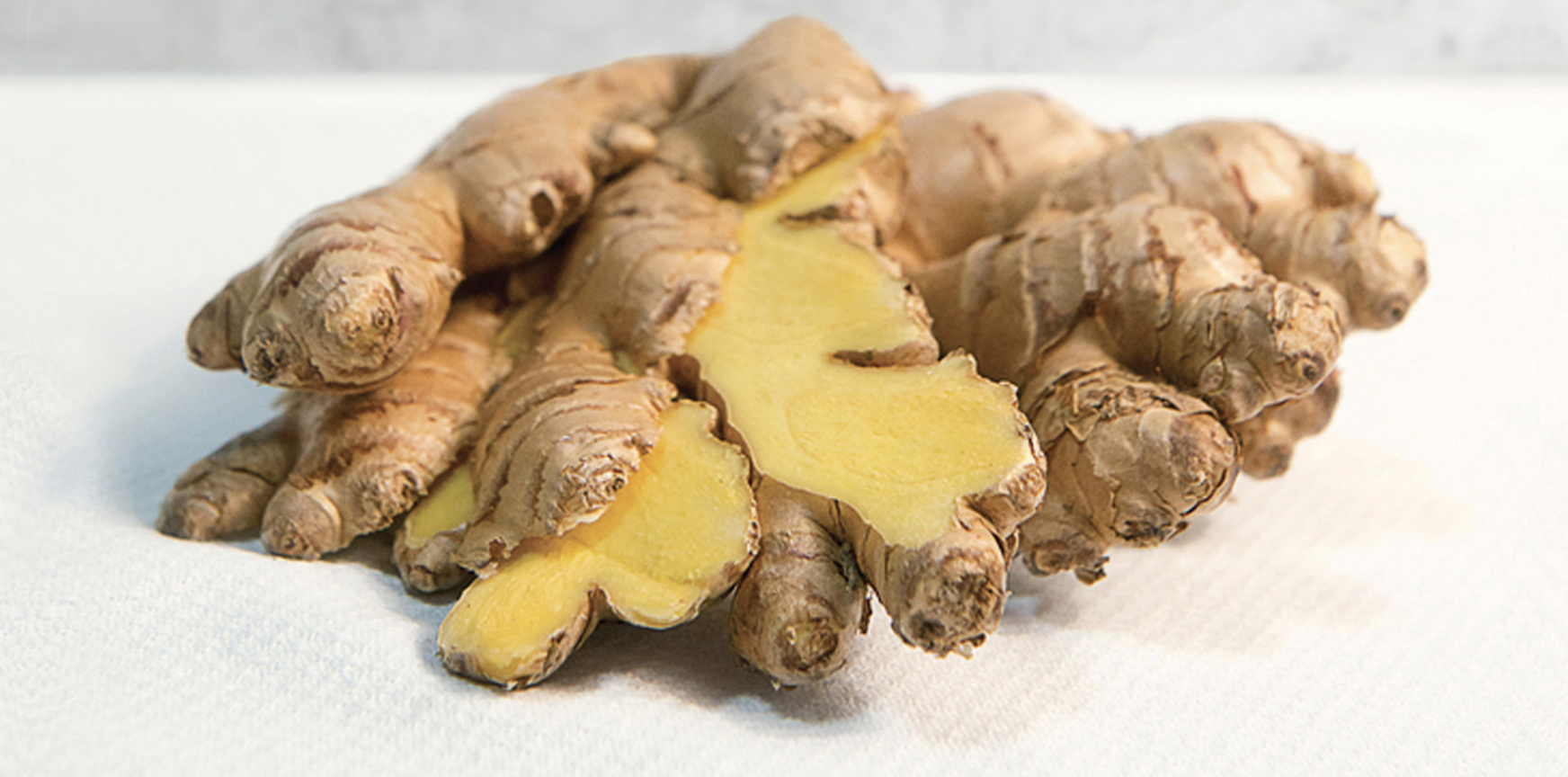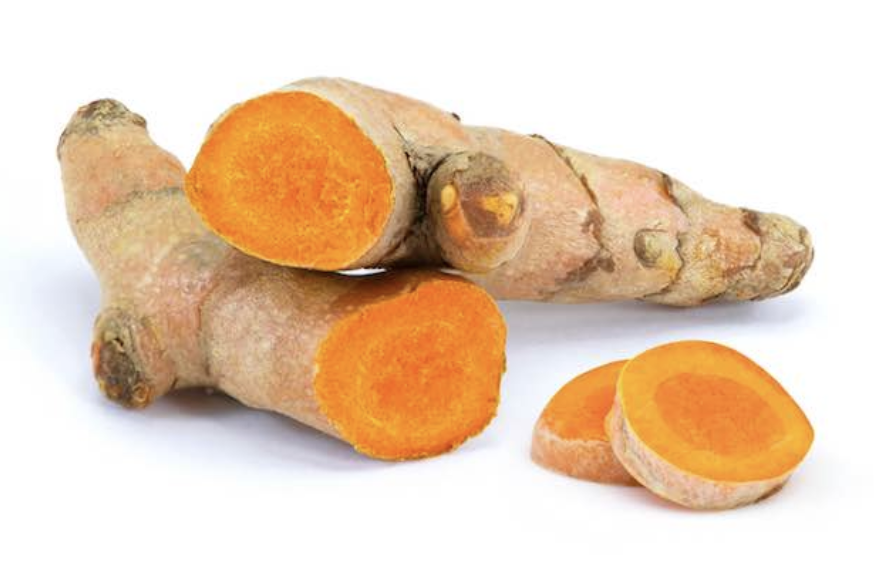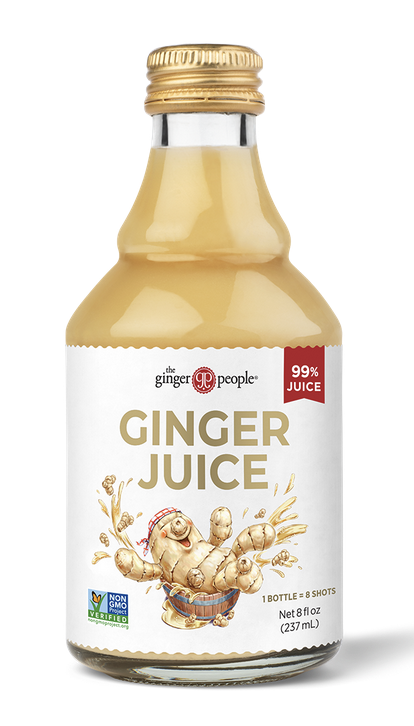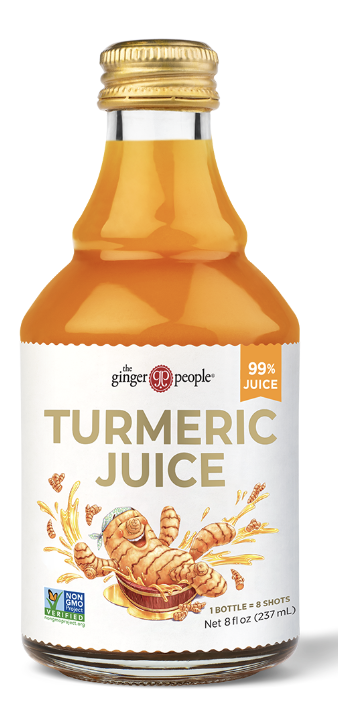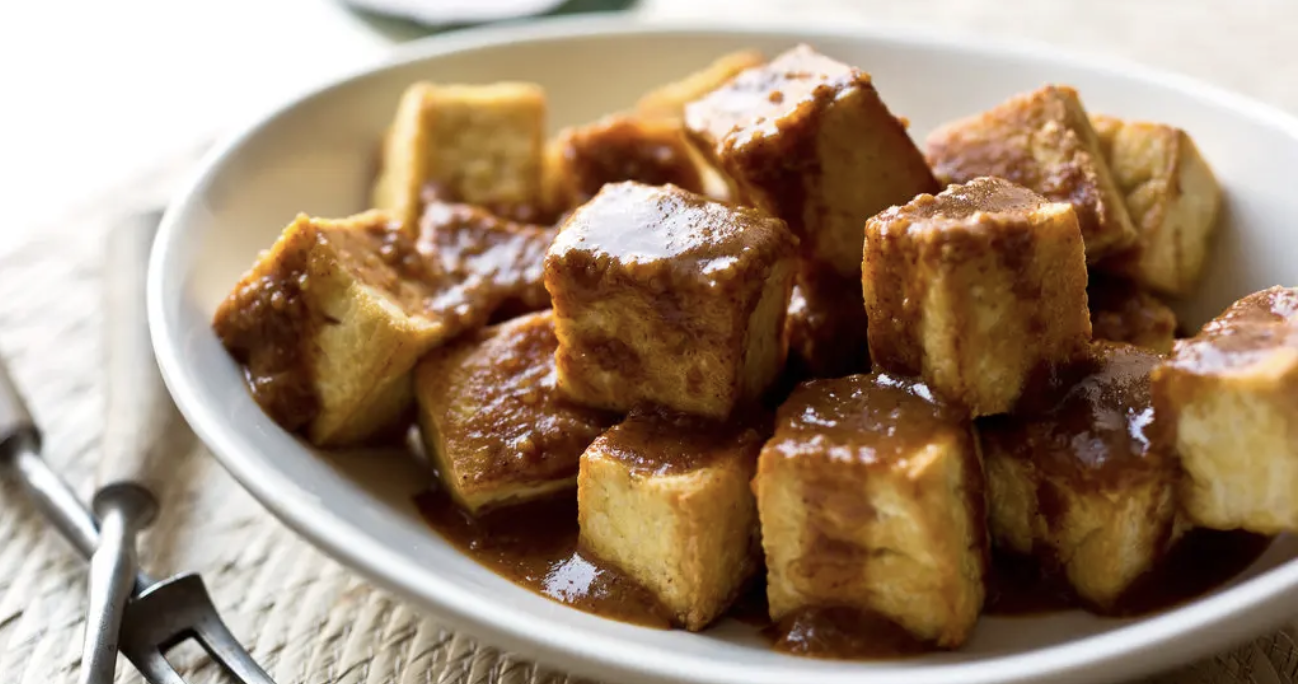Discover Roots: Ginger and Turmeric
By Chef David
Making small changes to eating habits can improve overall health – but where should you start? Try ginger and turmeric. Ginger and turmeric are gnarly roots of plants from the Zingiberaceae family with a lot in common. Ginger is more of a grayish color, while turmeric is yellow-orange. They have an earthy flavor profile with a spicy kick, some describe it as being bitter yet sweet. Turmeric may be a bit muskier. Both spices have powerful therapeutic and preventive properties.
Ginger
Sushi lovers may be more familiar with pickled ginger, which is used to cleanse the palate. Ginger is native to Asia and has been used in cooking for almost 5000 years. In addition to providing flavor, ginger can help with bad breath by neutralizing bacteria by activating enzymes in saliva. It contains gingerol, a natural component of ginger root, which regulates the rate at which food exits the stomach and continues along the digestive process. Eating ginger encourages efficient digestion, so food doesn’t linger as long in the gut.
Ginger contains vitamins C, B6, and B3, manganese, potassium, iron, copper, and calcium, and is loaded with antioxidants. Gingerol is a natural oil that provides ginger’s fragrance and flavor, the sweet, throaty burn, as well as regulating the digestive process. (Gingerol is closely related to capsaicin, the compound that gives chiles their spiciness). The gingerol and shogaol in ginger reduce inflammation, are effective in preventing nausea and vomiting, and are linked to long-term pain relief. Ginger has antimicrobial properties and prevents bacterial growth. It is naturally energizing, managing blood sugar levels, which boosts energy and reduces fatigue.
A daily shot of ginger juice is one of the most convenient ways to consume fresh ginger. But grating fresh ginger can trigger mucosal cells producing a substance that makes it hard for viruses to attach to your body.
Lessen The Burn? Minced fresh ginger has maximum flavor. Heat changes gingerol into zingerone, which is sweeter and adds an aromatic quality. For more heat try dried ginger the dehydration process transforms it increasing the spice level.
Turmeric
Turmeric is a vivid yellow-orange spice that contains a micronutrient called curcumin an antioxidant compound in turmeric, that has anti-inflammatory, anti-bacterial, antifungal properties has anti-inflammatory properties. You may be more familiar with it as the yellow spice in curry powder. Flavor-wise, it is musty and earthy with a bitter aftertaste. Fresh turmeric has a strong flavor and should be used sparingly, and it can permanently stain almost anything it touches with its distinctive yellow hue.
Turmeric is a good source of vitamins C, and B6 as well as manganese, iron, omega-3, and potassium. [To improve the absorption of turmeric, pair it with piperine, found in black pepper].
Like ginger, turmeric can also play an important role in digesting that food and reducing inflammation. Taken together they may have a synergistic effect.
Ginger People – Turmeric and Ginger Juice
Ginger People produces turmeric and ginger juices certified by Kosher Australia. These juices contain no sugar or water. A 32-fluid-ounce bottle of ginger juice contains 2 1/2 lbs. of ginger. They also sell Fiji ginger syrup, and ginger spread (both of which are kosher). We felt the ginger spread made an interesting jelly substitute with the nut butter of your choice, and a surprise filling for your Hamantaschen.
Ginger People uses a proprietary juicing process and flash pasteurizes the juices to retain their healthy properties. Heating enhances the anti-inflammatory transforming gingerols into corresponding shogaols.
1980s Bruce and Abbie Leeson built the world’s largest ginger and turmeric business. The Ginger People offers a product range that honors the authentic, innovative, and values-driven fundamentals of ginger and turmeric.
Ginger People can be found in local stores
Our Experience
We became true believers in the health power of ginger and turmeric. These juices are convenient to use in cooking, adding a splash to soups, stews, dressings, and stir-fries. Ginger People’s turmeric juice is a burnt orange color, but it blends nicely into the sauce, adding nutrition. Just a bit of turmeric juice can punch up the flavor without the signature bright yellow color overpowering the dish. Be careful not to add too much, the flavor of fresh ginger and turmeric can be strong.
We recommend adding a shot of juice to create healthy cocktails to avoid colds, making a morning elixir with orange juice as the base, or adding them to a smoothie.
We can’t imagine meal prep without Ginger People juices.
Recipe – Tofu with Peanut-Ginger Sauce – [Adapted from the New York Times]
Note: This recipe keeps well for a week in the refrigerator. You may want to thin it with water. This sweet and pungent peanut sauce spreads easily on seared, grilled, or uncooked tofu. It also makes a nice dipping sauce and is great on noodles.
Ingredients:
- 3 tablespoons creamy unsalted, unsweetened peanut butter
- 1 tablespoon rice vinegar
- 2 teaspoons soy sauce
- 1 to 2teaspoons light brown sugar (or substitute maple syrup)
- 1½ teaspoon ginger juice
- Cayenne to taste
- 2 to 4 tablespoons warm water
Preparation: In a small bowl, whisk together all the above ingredients. Thin out as desired with water. Brush or spoon onto sliced tofu. We recommend crisping the tofu first in an air fryer.

